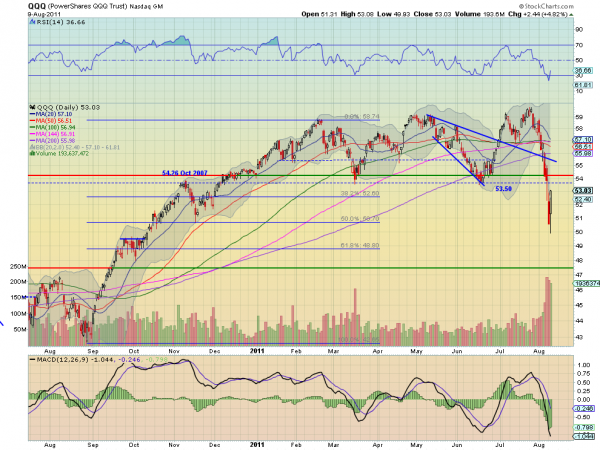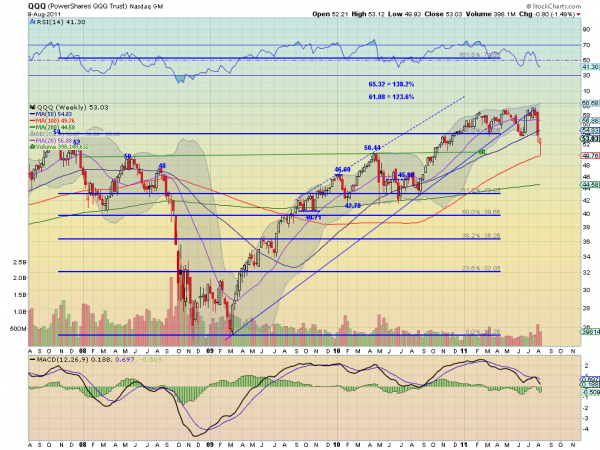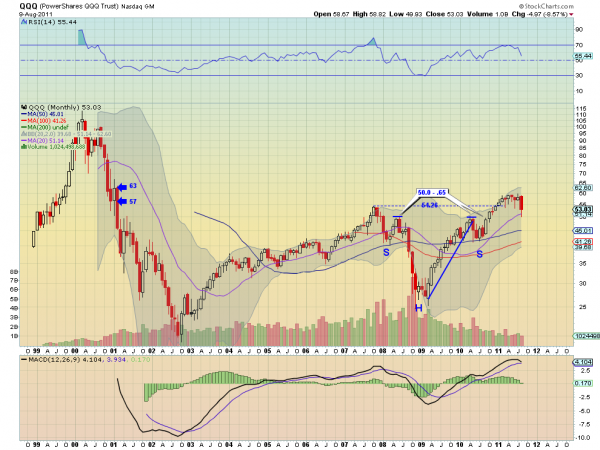by Agrimoney.com
Where shares led crops, broadly, followed.
(So for bulls, it was just as well agricultural commodity markets closed when they did, before the Federal Reserve's latest monthly statement, which were taken as highlighting the US central bank's limited powers to halt the shakedown.
The Dow Jones Industrial Average fell 0.3% into negative territory in late deals, although the S&P500 index remained 0.6% ahead. US crude dipped back below $80 a barrel.) See update below.
But that's getting ahead of ourselves. When Chicago and New York, let alone London and Paris, futures markets closed, the Dow was ahead.
And that was enough to let the lid off selling pressure in farm commodities too.
"The rally occurred because equity and energy bottomed temporarily after the liquidation caused by margin calls finally waned," Darrell Holaday at Country Futures said.
'The weak link'
Not that this meant that grains were shared equally. Or even that all contracts rose.
Soybeans, for instance, closed down 0.9% at $12.99 ¾ a bushel for November, the lot's lowest close, bar one, since March.
"Soybeans have been the weak link throughout the session because the weather is seen as bearish with rains moving through critical areas by the weekend and the temperatures are expected to be very mild," Mr Holaday said.
The oilseed is, in the US, in the key month for pod-setting.
"The start of August has not been as nasty as July was. And soybeans anyway have an ability to hunker down and wait for a better time," Jerry Gidel, at North America Risk Management Services, said.
Besides, the condition of the US crop actually improved, by one point to 61% in the "good" or "excellent" categories, weekly data from US Department of Agriculture showed overnight.
'Lot of anxious feelings'
That meant it was in better health than US corn, of which 60% was rated in the top two grades, down two points on the week.
That offered some support to the grain, as did the prospect of Thursday's USDA Wasde report, the latest in the influential monthly series, in which data on US yield and acreage estimates are being eagerly anticipated.
Mr Holaday said: "There are a lot of anxious feelings ahead of USDA numbers on Thursday.
"A bearish corn yield number will be quickly dismissed by the trade, but if they don't lower harvested acreage significantly then that will be seen as bearish."
Corn for December, the best-traded lot, ended up 0.4% at $6.88 ½ a bushel.
No rain on the Plains
That was way behind wheat, which added 2.3% to $6.71 ¾ a bushel for September delivery in Chicago, as speculators rushed to cover short positions.
Indeed, in Kansas, a less frequent destination for fast money, the September lot added a modest 0.9% to $7.62 a bushel.
Not that investors didn't have fundamental reason to be relatively upbeat on wheat, with the condition of the US spring crop faltering – down four points to 66% in the good and excellent categories – and continued dry weather posing questions over the autumn sowings season in the US southern Plains.
As US Commodities noted, "the weather remains non-threatening, except for the southern Plains".
'Caught the market off guard'
Furthermore, an Egyptian tender showed US export prices falling in line with ones from Russia, whose fierce competitiveness has won it approaching 1m tonnes of orders from Cairo in the last six weeks, the latest 60,000 tonnes on Tuesday.
The pricing "caught the market a little off guard", Mr Holaday said.
And, with European prices also getting nearer parity with Black Sea ones, Paris wheat was helped to a 1.7% rebound to E193.50 a tonne for November delivery.
London's November lot added 2.2% to £167.50 a tonne.
Another Brazil downgrade
White sugar managed a stonking gain in London too, closing up 3.7% at $736.30 a tonne for October delivery, and wiping out most of its losses of the past week.
The lift was in the main on the back of jumping raw sugar in New York, where the October lot soared 5% at one point after, importantly, failing to trigger 100-day moving average at 26.21 cents a pound.
Furthermore, Datagro chipped in with a downgrade to its estimate for the cane crush in Brazil's important Center South region in 2011-12 to 517.4m tonnes, down from 536m tonnes.
(For comparison, the benchmark estimate from cane industry group Unica last month was for 534m tonnes.)
Datagro forecast the region's sugar output at 31.85m tonnes, down from 33.7m tonnes.
'Every which way but loose'
New York coffee managed small gains too, adding 0.2% to 234.75 cents a pound for September, after earlier threatening to set a fresh six-month low for a spot contract.
But cotton remained out of favour.
"Technically, there are still several major technical patterns simultaneously at odds with each other," Keith Brown at Georgia-based brokerage Keith Brown & Co said, noting indicators such as the 39-month cycle and daily divergence for the December lot.
"All are collectively pushing and pulling the market 'every which way but loose'."
On fundamentals, Sudakshina Unnikrishnan at Barclays Capital noted that while the US crop was poor, "global production estimates ex-the US remain in good shape, on year-on-year gains in output from other key producers like China, India and Pakistan".
Cotton for December closed down 2.0% at 95.80 cents a pound, the contract's lowest finish of 2011.













